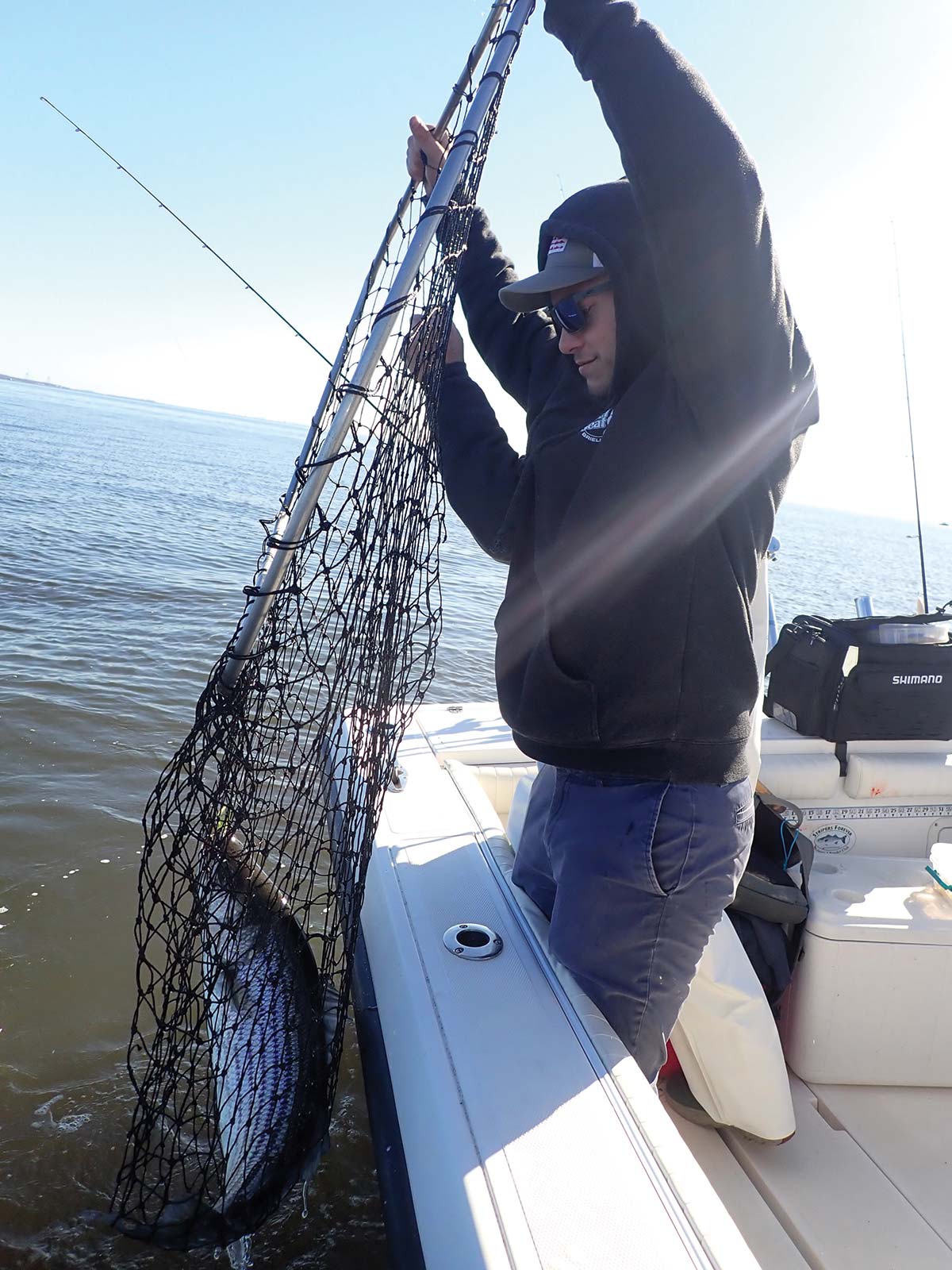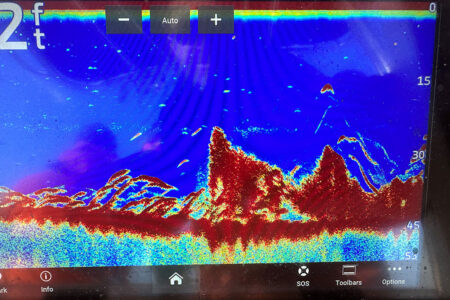
Beating a dead horse is well worth the release of a live striper!
In 2021, all bait fishermen targeting striped bass have to adapt to the new mandate of using only non-offset inline circle hooks. Gone are the days of wild, Bassmaster hooksets as circle hooks demand a softer, more passive approach. The circle hook scenario is going to have to take some getting used to when it comes to both setting the hook and rigging up baits properly.
The premise of the circle hook is for the fish to swallow the bait whole, then as it moves away at an angle the circle hook gets pulled out of the gullet and the curved barb of the hook follows the line out against the mouth and pierces the jaw with the natural momentum of the fish fleeing, thereby “setting” the hook. In order to make that whole system work, there are a few tips.
Best rig – Hi/low and three-way swivel rigs are great when setting a j-hook properly but I find a fishfinder slide rig works best when using circle hooks as it allows a bass to fully engulf the bait and run off, transmitting the hit directly to your reel. The rig is a sinker slide, then 75-pound barrel swivel, a short leader of 16 inches, with a snelled circle hook so it lays flat for a proper hookset and doesn’t swing around with a loop knot or clinch knot, pulling it direct to plant into the jaw of the bass.
Worming – When fishing sandworms and bloodworms, it’s good to “worm ball” it. Generally bass will nip at worms and clip them off, so the more worms on a hook the better, and the more scent the better. Rig up a 4/0 circle hook and thread the first worm on, then pierce the next one or two on through their heads, then wrap in a ball around the rest and tie it all down with a piece of elastic string. Now douse the whole rig with FinEssence shedder crab or shrimp oil and you’re good to go.
Clams – Use elastic tie down on clam baits as bass in the surf will nip and rat-tat baits picking away at them. When j-hooks were legal, you used to be able to short set the hook and feel the bite holding the rod, now you must let them eat fully. The tie down prevents them stealing the bait as soft clams tend to rip off. When anchored up on the other hand, there’s no reason to tie up your clam or bellies, once through the meaty part of the hook and set the bait out.
Bunker chunks – When using chunk baits, it’s paramount to success to have the barb piercing out the other side and not dug into the bait. That said, smaller chunk baits may be needed now. Bigger bass of 18 to 40 pounds plus will swallow the baits whole, but smaller fish may mouth it a bit, so you need to be sure they swallow the entire offering.
Live baits – That goes for snagging bunker too, meaning no more “snag-n-drop” but more like “snag-n-switch” to a circle hook. Be sure to pierce the curved barb out the other side completely and to not sink it into any heavy meat as it will not find purchase when pulling out to set. Try bridling your chunks; for eels, it’s the same way you’d hook with a j-hook (through the eyes, nostrils or lips), but the hookset is where the key to success lies.
Anglers are going to have to reprogram as to not rear back and set the hook when the fish takes the bait. The Pavlovian response of seeing the rod going down hard and running to slam back and set the hook hard must be tempered with patience now getting to the rod and slowly reacting to a calm, steady reel. One other facet is that the circle hook will not work properly if the fish is swimming directly at you, so when setting any hook, it’s best not to pick the rod tip up high and vertical, but always have it off to the side at a 45-degree angle.
By boat, allow the fish to run pull to the side again, not straight up. Simply reel up tight then pull to the side with a little bit of force, then let the fish set the hook on itself when it puts pressure to run away. If you’re in the surf, I suggest using a baitrunner type reel to allow the fish to run off with bait, or loosen drag or use a rubber band clip, then adjust drag tight when setting hook, pull to the side at a 45-degree angle and reel up tight slowly bringing the rod back behind you in like a slo-mo hookset.
There’s going to be a lot of trial and error with those not used to circle hooks; but be vigilant and dial it down slowly and you’ll find the hooks will do all the work for you.




